Pinzone: Marko Mitrovic's Patterns of Play Explored
A look at the Revs' new man in charge's tactical patterns with the USMNT U-20 and Olympic squads...
Marko Mitrovic’s appointment as head coach of the New England Revolution was a pleasant surprise to many and a questionable one to others.
The excitement comes from the unknown of a coach being given his first opportunity as the head coach of a top level, professional team. And it’s a questionable appointment to others for the exact same reason. We don’t know what to expect and there isn’t a well trodden and documented tactical path that we know we are now headed down.
It means no one, absolutely no one knows how his tenure with the Revs will go. Much more so than perhaps a Peter Vermes or Josh Wolff, who would have had an extensive catalogue of MLS level games to go back and analyze. What we have instead is the U.S. Men’s 2024 Olympic campaign as an under-23 plus Walker Zimmerman squad and the 2025 U.S. under-20s competing at the U-20 World Cup.
These where games wherein Mitrovic was in charge as head coach. We can assume final say on team selection and tactics was largely down to him. It is important to remember, however, that he was working within the larger USSF organization. What we don’t know then is how much of what we saw tactically may have been pushed on him from on high. The USSF has a well established history of thinking they know best how the game should be played.
But this is what we have to look at, and look at we have.
Not every single game from these two campaigns was analyzed, there was an extremely non-competitive game in the U-20 World Cup against New Caledonia, for one, and one friendly in the buildup to the 2024 Olympics against Japan that was included. The purpose of this analysis is not to present highlights, recap goals, individual moments, controversial officiating decisions and so on. The focus was entirely on pattern recognition in different phases of play.
Before we begin, a few notions need to be dispelled. One, Mitrovic was not “coaching children” with the U-20 and U-23 squads. Young players, yes, immature players, sure, children, no.
These were two squads of fully professional players who have been treating soccer as a full-time job and livelihood for several years. Mitrovic himself is not an inexperienced, bright eyed, idealist just starting his career. He has been coaching since 2011 and spent four years as an assistant coach in MLS previous to working with the USSF.
Does that mean he will be a success? Of course not.
It does mean if he is a success it won’t be an overnight one and he has not been minding the children for fourteen years in preparation for this job. Anyone questioning whether or not Carles Gil will buy into Mitrovic’s plans or not based on his last coaching job is simply groping around in the dark looking for a hot take.
Formations Used
Mitrovic was quick to point out, as nearly all coaches do in their introductory press conferences these days, that the exact formation itself isn’t really important, doesn’t dictate all that much and almost never looks the way it does on FotMob anyway. And he’s right, the U-20s and U-23s routinely were thrown up on a graphic as 4-3-3 and then rarely found themselves in one during the course of play.
However, both of Mitrovic’s teams were highly organized in their shape (and execution) and collective patterns of movement in whatever phase they were in. This is not to say they were overly defensive or rigid, instead, it was perfectly clear the shape taken up was part of the plan and everyone was committed to it.
Mitrovic said the Revs will always be in attack mode, which is appreciated for the intent behind that statement, we will though still distinguish between attacking play being the things you do with the ball and defensive play, things being done without the ball.
Attacking Shape
The attacking shape in their own half and through the midfield portion of the field was largely a standard 2-3-2-3 that has been used in conjunction with a base formation of a 4-3-3 since at least Johan Cruyff’s Barcelona in the 1990s. The outside backs pushed up in line with a single pivot (deep mid, defensive mid, 6, whatever) in front of the center back pairing with the two center mids residing in their respective half spaces (see lines above, not central, not wider than the area, thus half space) allowing the center forward to stay high and central while the wide forwards stretched out to the touchlines.
This structure allows for excellent spacing between each player and line in the team, provides many triangular and diamond shapes for passing angles and options and doesn’t overload any vertical or horizontal line with two many players. It’s an outstanding platform for multiple types of build up sequences and is extremely flexible. There’s a reason why the best soccer ever played on this planet was done in Barcelona on two occasions with this attacking shape.
At times, the deep mid would drop in between the center back pairing to create a three player back line, allowing the outside backs to push higher in their own half. It did ask more of the center mids as they were required to drop deeper to provide passing options in central areas. This was seen much more with the Olympic squad than the U-20 World Cup team.
Defensive Shape
Most often, both teams would line up in a 4-1-4-1 whether setting up on an opponent goal kick or free kick or when defending around the midfield line. In non-pressing moments of defending they would operate in a medium block where pressure wasn’t applied heavily or consistently until around the midfield line. The shape was more vertically narrow than horizontally tight. In these moments where the opponent had controlled and established possession, both teams looked to clog the middle and invite passes into the wide areas. The U-20s looked to be positioned higher in most situations than the Olympic squad and pressing triggers seemed to be acted on with more frequency by the younger squad.
The use of a single pivot does enable five players to press aggressively from high starting positions, as opposed to more limited pressing actions when playing a double pivot as two players are used to screen the back line. The risk, of course, is what happens when that aggressive press is broken and only one player is left to cover a large area in front of the back line.
On occasion, the U-20s sat in a medium block in a 4-2-2-2. This may have been to offer more protection to the back line and aggressive pressing in the wide areas, that the outside backs were expected to join in on. A center mid would join the center forward in the front of the formation.
This may be a more comfortable arrangement for the Revs. It would allow Gil to operate from a higher position and perhaps save his legs a bit with his defensive duties. It would also benefit Matt Polster, Alhassan Yusuf and Jackson Yueill, none of whom would profile as competent single pivots.
Moving into the 2-3-2-3 attacking shape can be done from either of these defensive setups. However, a 4-1-4-1 allows both center mids to get into their respective half spaces a bit quicker and puts the wide forwards that much higher up the field to threaten in behind quicker. Reason being, their defensive and attacking areas of operation are closer together.
Who Benefits from these Formations?
If we see Mitrovic follow through with a back four, three players in central midfield and a wide front three arrangement it would be to the immediate benefit of Luca Langoni. Tomas Chancalay is rumored to be on his way out and we’re assuming Ignatius Ganago will not be returning.
The setups described above require depth out wide, something the Revs might quickly not have if those two depart. That leaves Langoni with a chance to A) impress the new guy and B) get back to the form he showed briefly in 2024. The defensive expectations of the wide forwards, which we will get to, also may be another lifeline for Langoni.
A four player midfield line also potentially benefits Yusuf, who showed promise in 2024 as a box to box midfielder, equally capable of pressing high, breaking forward and dropping deeper to offer support when needed. That largely disappeared in 2025 but now that someone else has disappeared, perhaps he’ll bounce back in 2026.
Jack Panayotou spent 2025 on loan in an injury hit year but was an impact when he did play on loan with Hartford Athletic. His skill set going forward at speed with his dribbling and delivery could be valuable as either an attack minded center mid to complement Gil or streaking up the field from out wide. Bringing back tales of what it feels like to win a trophy in New England would be a secondary benefit of keeping Jack around.
The other big winner here is Curt Onalfo. Playing with only two center backs means the Revs really only need to go and get one or two solid backup options in that position. Playing with three center backs would require a third MLS level starting center back, which they absolutely do not have at the moment, and a further two couple of solid backups.
Attacking Patterns
As with most teams in the modern game, The U-20s and U-23s were keen to take advantage of high turnovers forced by their pressing actions. This is a staple of the modern game, as remarked on by Jurgen Klopp when he christened the press as the modern playmaker. The U-20s at the World Cup this year were more aggressive in their press and more consistently willing to commit numbers forward in attack to seize on these moments. Perhaps they don’t always provide direct goals but they do provide corners and free kicks in threatening areas.
When required to build-up from their own half without the benefit of winning the ball in the opponent’s half there was a clear purpose to their positioning and use of the ball. The U-23s struggled mightily at times to move play into the opponent’s half. It was a worrying display of stalled out attack and lack of invention and ideas. However, this was much less the case as the U-23s spent more time together and not the case much at all with the U-20s. That we can be thankful for after what we’ve watched pass as attacking play for the last two years.
The general attacking patterns were centered around advancing the ball down one side of the field with the goal of putting a wide player in behind the defense. This would lead to a break of players centrally crashing the penalty area. At times, they entered the final third from sustained build up looking like they were arriving on the end of a counter attack.
This didn’t always develop quickly but they knew what they were looking for, opportunities to combine with three or four players in the wide area and adjacent half space. When that wasn’t on, they would circulate back through the center backs, mostly, and sometimes the pivot to try and create either numerical or positionally advantageous situations on the opposite side.
The deep-center mid wasn’t overly involved in the initial build-up, in fact he often looked like he was simply trying to draw the opponent’s forwards away from the center backs. The two more advanced center mids would drop deeper in their respective half space to take passes direct from a center back and when possible pop it out wide and trigger forward movement.
This pattern of using two groups of four players either side of the field with the pivot, goalkeeper and center forward as central reference points and supporting options for stalled movement is similar to a pattern of attack employed by Marcelo Bielsa.
In the image above, we can see a diamond around the ball, with the deep mid there to support and switch the play if needed, the center forward offering an potential outlet and the goalkeeper as a deeper option to switch the play. The center mid not directly involved in the play would often drift higher. Width was still the priority from the right sided wide players.
If play moved more slowly into the middle third of the field, there was a propensity to look for a long, attacking switch of play pass from the half space to the opposite wide area. Generally, whether it was a counter, building up down one side or a switch of play, the idea was to arrive in the attacking third on the move with willing runners crashing the area.
Switches of play were typically attempted with a single, long aerial pass hit forward. This was to try and hit a wide mid in space. This is a hard pass to make but has a potential big payoff in isolating an attacker 1v1 in space. More risk but much higher potential award than slow switches of play across the back line involving two or three passes.
Moving the ball through the center of the field was rare. There were few instances of a direct pass to the center forward looking to lay the ball off, not many up-back-throughs from central areas or center mids combining with one another. They at times were too hesitant to go long and direct when being stalled out by the opponent and it remains to be seen how a hold up striker would be utilized by Mitrovic.
The spacing and positioning being all fine and good for attacking play did leave some issues when the ball was lost. All teams employing outside backs getting forward and leaving only a 2-1 defensive shape behind are vulnerable to this. The U-20s and U-23s were no different and neither will it be for the Revs.
The Carles Gil Question
This attacking shape and the patterns of play that go with it don’t require a playmaker to make it a success. Fleet footed, skilled with the ball chance creators and finishers will be needed out wide. At least one multi-faceted center mid capable of finishing, being press resistant and smart on the ball while also pressing and tracking back with equal zeal will be needed. It’s a single striker system, so whoever is out there needs to be able to score in a multitude of ways and perhaps live without much involvement in build-up. But it doesn’t cry out for a playmaker.
So what do you do when you have one of the best playmakers in MLS?
Gil makes whatever attacking approach employed better, Mitrovic can at least rest easy there. Whatever he comes up with, Gil will make it better. Mostly by doing what he’s done for several years in being the spark, the creative outlet, the one who finds a way forward when the system or the press doesn’t.
But he’s used to going where he pleases, when he pleases in all attacking phases. Which is great, when he’s on and gets the ball as often as he wants it. But everyone in MLS knows if you stop Carles Gil, you stop the Revs.
That has to change at some point, both for the team’s chances while he’s here and for when he’s not here. It’s possible, at least, that Mitrovic will be here after Gil is either gone or in a reduced role. At some point, there will be more days where the system makes Gil work rather then the other way round. Will that day come in 2026, probably not, but we know Gil can’t single handily drag a team into the playoffs.
This is a chance then for the Revs to become a more balanced team where Gil plays within the system more often. That would mean if we see what’s been described above take place, sticking to a half space on one side more often, less drifting around. Not coming deep to get on the ball in the left back position, let the left back get the ball in the left back position. Accepting that he can drift up with the center forward while the build up takes place on the opposite side, be a decoy initially and then still strike and be Carles Gil when he needs to be.
How Gil evolves in this next stage of his career with Mitrovic potentially guiding him for most of what remains of it will have huge implications on the entire organization.
Defensive Patterns
The one overriding aspect of watching both the U-20s and U-23s defend was the obvious clarity everyone on the field had. Their positioning was drilled to precision from game to game and moment to moment. Opponents changed, personnel changed but what was expected was nearly always appearing to be executed as expected.
The medium block, mostly deployed as a 4-1-4-1, was compact vertically and not employing an overly high line. The benefit was three fold, the compactness invited the ball to go wide, protected being exposed centrally and limited being hit on long balls over the top. When the ball was played wide this nearly always initiated a hard press on both the opponent’s outside back and winger as well as a center mid if nearby. This was smart use of the best defender in the world, the touchline. The touchline is the perfect defender, it never gets beat and it's never out of position.
The aggressive squeezing of space out wide while clogging the middle limited the U-20s and U-23s opponent’s chance creation from controlled build-up greatly. The wide forwards were expected to press and to track back with regularity. The wide forwards would track their opposite number, the outside back on their side and also double back to create a defensive 2v1 against an opponent winger. This is the strongest possible defensive support a wide forward would be asked to offer.
At times, advanced opposition outside back positioning dragged the U.S. into a back five. This responsibility seemed a given for U.S. wide forwards. It would potentially be a challenge for Chancalay should he still be here. This again bodes well for Langoni. Even when not contributing in attack, his defensive work rate was excellent.
Pressing out of the medium block seemed predicated on back passes along the opponent’s back line. If the opponent had three players in their back line a pass to the central of the three nearly always triggered an aggressive press. On opposition goal kicks, Mitrovic’s men (not children) would allow for one or two initial passes to be made under light pressure. As soon as one side or the other was played to, the press would come. And it would come with as many as six players, the center forward, the midfield line of 4 and the outside back on that side.
Above is a typical press where the center forward splits the center backs and they try to cut the field in half and then press aggressively. As many as six players go man to man in these moments, the above shows the huge amount of space left behind the pressing players.
When it worked, it caused aimless long balls, high turnovers and chances on goal. When it didn’t, as math would dictate, problems arose.
The great thing about pressing with six players against six opponents in a quarter field sized space is it creates a huge challenge to play through. But if played through it be, there is then a large amount of space to be attacked by four players against four defenders in half a field. It’s still even numbers but attackers will take it when they have ample space to operate in and often find a way to exploit it.
This suggests outside backs as adapt at defending as they are at attacking and a mobile defensive mid able to fill in across holes in the back line will be needed. A hard hitting, “destroyer”, man handling attackers in the deep mid position hardly has a place in the modern game and would be regularly exposed in these moments. Likewise, Peyton Miller and Ilay Feingold’s 1v1 defending would need improvement.
And that’s assuming Miller is still an outside back, Mitrovic played him further forward.
What does it all mean?
Potentially, it means very little!
We don’t know how much of this will carry over to the Revs. It would be hard to imagine none of it would carry over, however, certainly some of the patterns described above will show themselves in 2026 and beyond. It’s most promising to see the highly organized defensive shapes and movements. There’s an attacking system with hints of influence from Johan Cruyff, Pep Guardiola and Marcelo Bielsa. All coaches borrow and steal from other coaches, those three have ample ideas to be looted and retooled.
It would be hard to come away from watching these games and think there won’t be a system that can be understood and put in place. There’s a lot to like, there’s a lot that could bring excitement and success. There’s potential pitfalls, questions on who will fit where, what type of player is needed that the Revs have and don’t have. All taken together, we should take confidence that there is a vision beyond Mitrovic’s “Attack!” tactical over simplification.
If he can get two tournament teams short on prep time implementing his tactics to mostly good effect, surely he can do so with the benefit of a full preseason.
Let’s hope it works!



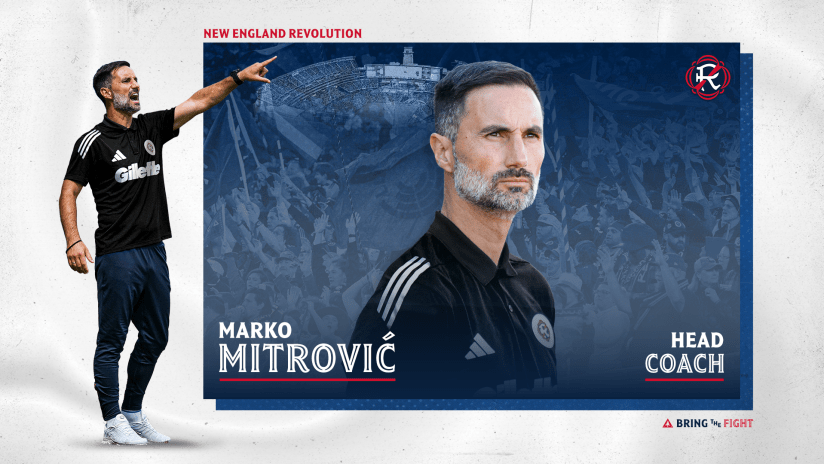
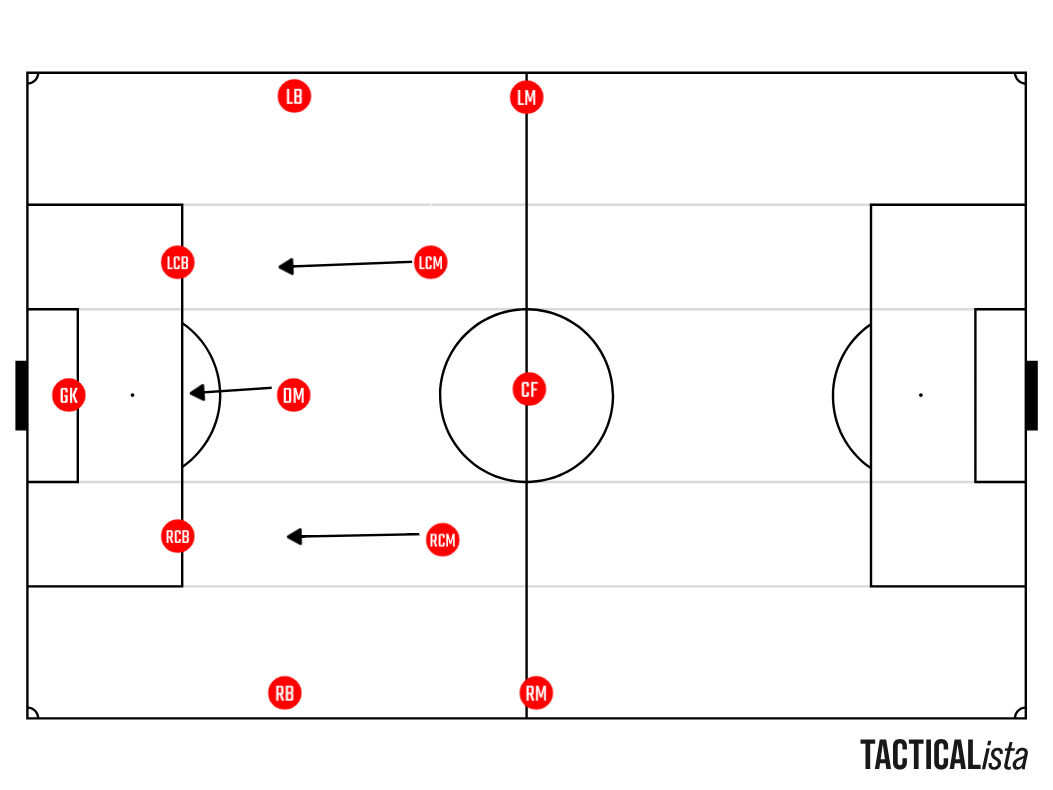
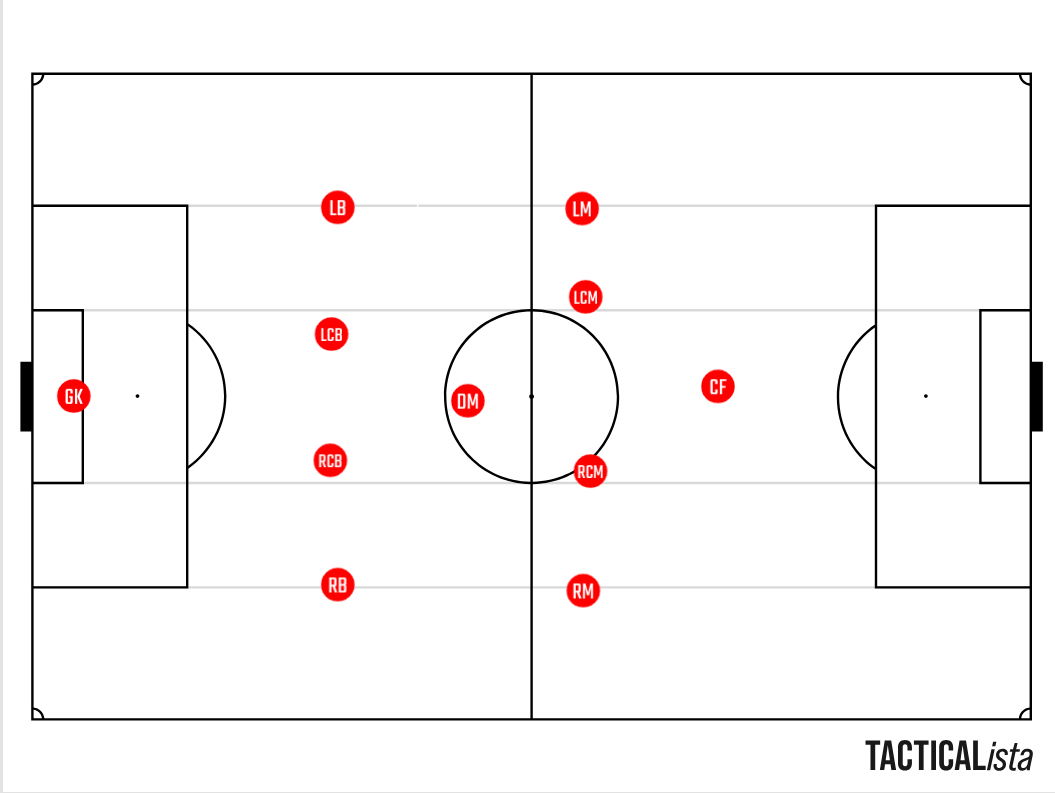
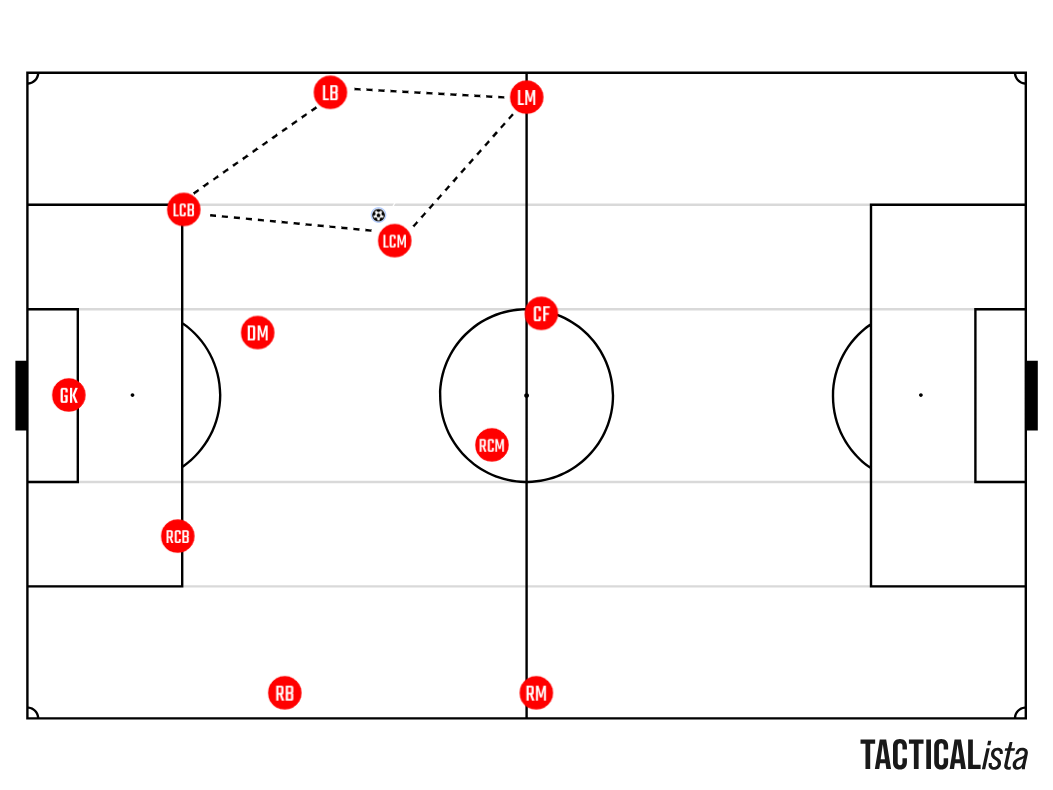
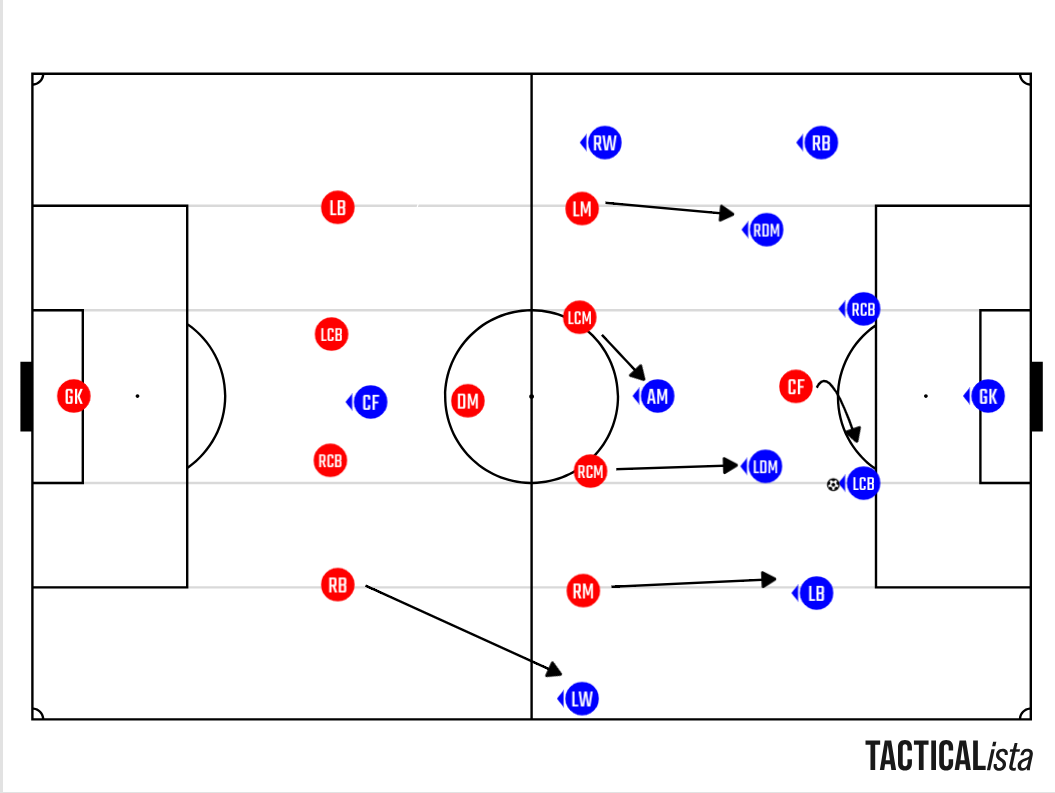
Amazing analysis. Thanks for your great work on this Tom. I'm looking forward to seeing what he can accomplish with the Revs. I'm cautiously optimistic that this season will be better than the Porter era.